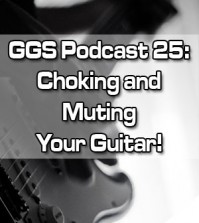A Crash Course In Choosing Your First Amp
#3: Digging Deeper Into the Sonic Jungle
As for the “stack” I pointed out, it basically refers to a specific amplification setup, which is different from a “combo” unit that combines the amplifier and speaker into a single unit, or cabinet.
You get a “stack” when you have a separate amplifier (also called the “head”) placed on top of a speaker cabinet. In this setup, you can combine any kind of head and speaker you want, creating a unique kind of sound. A half stack is one head on top of a single cabinet, while a full stack consists of a head on top of two cabinets.
As for speakers, size isn’t everything. A bigger speaker doesn’t necessarily produce a better sound, especially if you’re talking about frequency. The smaller models are often better producing high frequencies.
Pay attention to the back of the speaker as well – there’s the open-backed and closed-cabinet kind which differ in sound type. For a louder, arena-type quality, you’ll probably want the open-backed kind to get that big sound you’re looking for.
If you’re looking for an amp to practice with, go for the smaller speaker sizes ranging from 8” to 10” (usually in the 10-30 watt power range). Modeling combo or solid-state amps are a good choice for this need.
If you’re looking to rehearse or perform in a relatively small place, you’ll have to upsize your speakers to 12” AND crank it up to the 50-watt range to be properly heard.
For outdoor spaces that need a “big sound”, you’ll need a stack (i.e. the head/speaker configuration I mentioned) with 12” speakers that are running at least 100 watts.
#4: Creating That Killer Sound
This is what distinguishes one Guitar God from another. Each of them has a sound that defines their style and playing – you could even say it’s an extension of their personality.
To find that sound that speaks to your heart (and ears), you need to choose your amp based on a couple of characteristics, namely preamp and crunch.
Preamp (also known as gain) is when you create a distinct kind of distortion at relatively low volume levels. Certain amps have a master volume control on them that allow you to do this.
Now, the trick is to first kill the preamp and turn up the master volume to how loud you usually play. After that, gradually crank up your preamp/gain to get the desired mix of distortion. This is a good way to spot a bland or unappealing tone.
As for testing an amp’s crunch-worthiness, you’ll want to set it to “clean” at a high volume. If your amp is in the lower watt range, it’ll have a mushy quality to it when the volume is cranked way up (and “break” at low volume levels).
As such, models with a higher watt range won’t break up at extreme volumes. So, if your amp’s speaker has a robust, well-articulated and engaging quality even at high volume levels, you’ve found a keeper.
#5: What’s the Damage?
Of course, any guitarist has a budget to work with, so you’ll need to take into consideration how much bang for your buck you can get. Honestly speaking, there’s a wonderful range of amps to suit practically any budget, starting from hole-in-the-wall-dirt-cheap models to ones that will make a rock star blush.
So that means you’ll just have to find the type of amp you want (whether it’s solid-state, tube, the modeling kind, etc.) and find a specific model that comes in your price range. The only ones you’ll have to really save up for (or sell a kidney) are those, pricey, oh-yes-she-will-be-mine vintage Fender or Marshall amps.
Having said all of that, you’ll ultimately want to go with an amp that best suits your needs based on the pros and cons we just ran through. If you’re just starting out, your priorities in an amp are good tone and volume.
For the more seasoned players however, look into an amp that has the bells and whistles you want, like a multichannel feature that offers various tones. Also, think about the effects – are you happy with built-in effects, or do you need more versatility through add-on pedals or processors?
Thus, you’ll want to try out different amps to find out which exact tone appeals to you, regardless of its type.






You must be logged in to post a comment Login